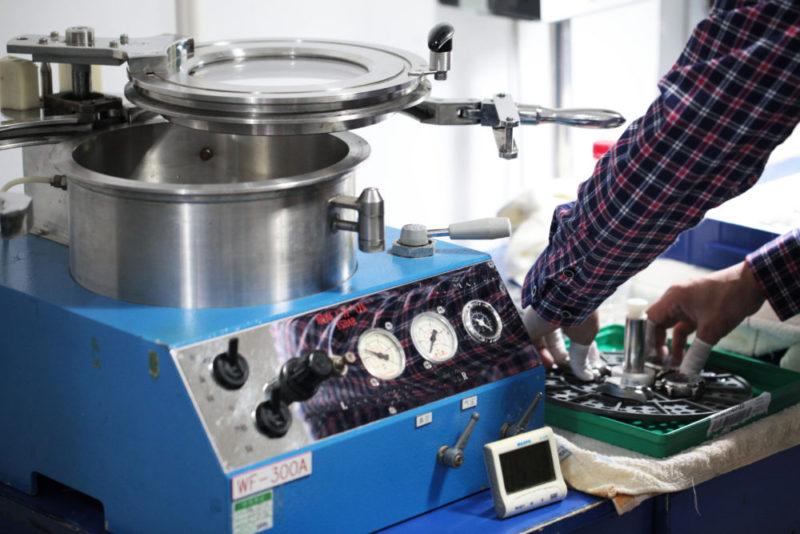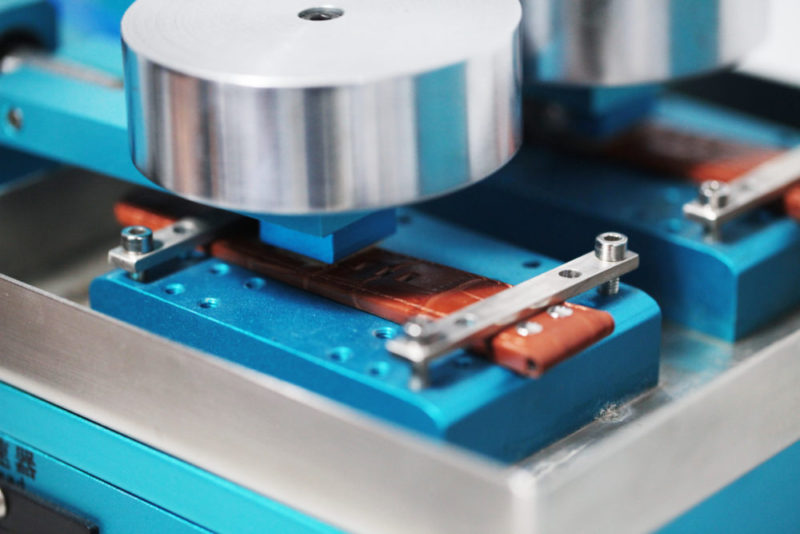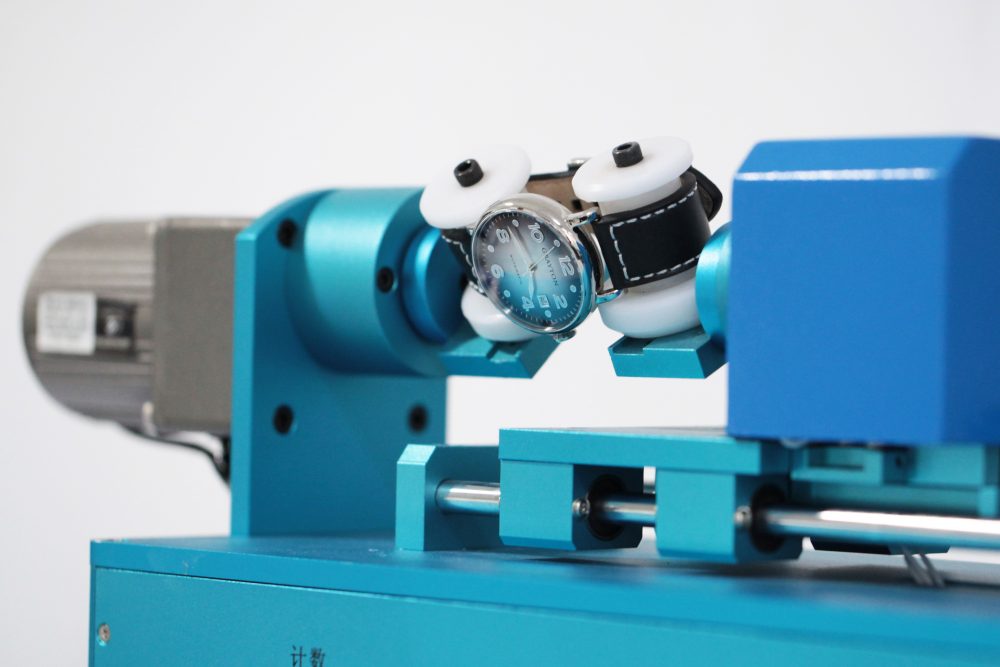In the watch industry, quality is paramount and Montrichard, as an expert manufacturer, maintains a high standard of quality assurance (QA) processes from pre-production to post-production.
There are three phases involved in our watch manufacturing quality control protocol:
- Incoming Quality Control (IQC)
- In-Process Quality Control (IPQC)
- Outgoing Quality Control (OQA)
Incoming Quality Control (IQC)
To ensure the quality of essential components, we employ rigorous testing that focuses primarily on a watch’s main parts – dial, case, and strap.
Dials
Dials are tested for ultraviolet (UV) resistance (UV Rays Test). This is done by applying an alloy paper over the dial in a half-covered position before placing it under the light of a UV machine. This determines if any dials show discoloration within 72 hours.
Cases
An Abrasion Test determines cases’ resistance to scratches. The usual process involves tumbling the cases in a coarse mixture of materials that can cause abrasion. This test checks for corrosion and scratches to the metals.

A separate Cases Condensation Test follows to examine if the cases meet waterproof standards by heating up the cases before placing them on cold plates and checking for any internal condensation.
Straps
A common test for straps is the Tension and Torsion Test. Here, the leather straps are continuously folded, stretched, and twisted using two different machines. Metal bracelets are checked using a separate machine where the cuffs are repeatedly shaken (also known as the Swing Test). All tests check the flexibility of leather straps and the sturdiness of metal bracelets.

In-Process Quality Control (IPQC)
During manufacturing, a series of follow-up tests are added in the process to guarantee quality. As a smartwatch manufacturer, for instance, the Hands Test confirms whether the watch’s hands are in the proper parallel alignment by careful examination using an HD monitor.
Outgoing Quality Control (OQA)
Before the final packaging and shipping, all watches are subjected to final inspection. Here are some of our essential on-site outgoing tests:
Burn-in Test
At Montrichard, burn-in is an Automatic Watch Accuracy Test. Here, the time accuracy is observed twice in different positions: at 24 hours with a watch’s face up, and again 24 hours later with its face down.
An Automatic Watch Accuracy Test is used to determine accurate timekeeping of the movement regardless of the physical position of the watch.
To counter-check the results of this test, we use a Timegrapher – a tool that also measures an automatic watch accuracy, amplitude, and vibration rate simultaneously.
Watch Water Resistance Test
Also known as watch waterproof testing, this procedure is an important on-site test for watches. Watch waterproof testing involves submersion and pressurization of watches to certain water depth equivalents to validate whether the timepieces are adequately water resistant.
At Montrichard, watch water resistance tests are done twice: 1) Waterproof Test (IQC phase) and 2) Air Leakage Test (OQA phase).
With the help of an air leakage machine, we expose the watches to certain air pressures. A watch is waterproof if no moisture is formed inside the glass or on the dial.
For other types of timepieces such as diving watches, a specialized dive watch pressure testing may be necessary depending on the manufacturer’s discretion.
Condensation Test
To check an automatic watch’s (or any watches) resistance against high and low temperature and humidity, a Condensation Test is needed.
The watches are exposed to different temperature and humidity (lowest-highest). Watches must remain moisture free inside their dials to pass this test.
Microscope Test
For the second time around, we double check our watches’ hands alignment to the indexes and if they fit well in the dial. With the use of an HD microscope, the hands are rechecked and magnified like a watch 3D model on a monitor attached to the microscope for better viewing.
In QA, strict monitoring of accuracy and precision are needed at all stages and require tests to ensure the quality of watches before shipping. Additionally, good QA procedures also mean an effective conformation to the international standards required by the law and other governing bodies in the industry.
Moreover, complying to rigorous on-site tests can prevent further product defects This equates to lower losses and an efficient way of managing the business.
other big brands choose to work with us?
With over 20 years of expertise, we are confident that we can meet your watch needs.






